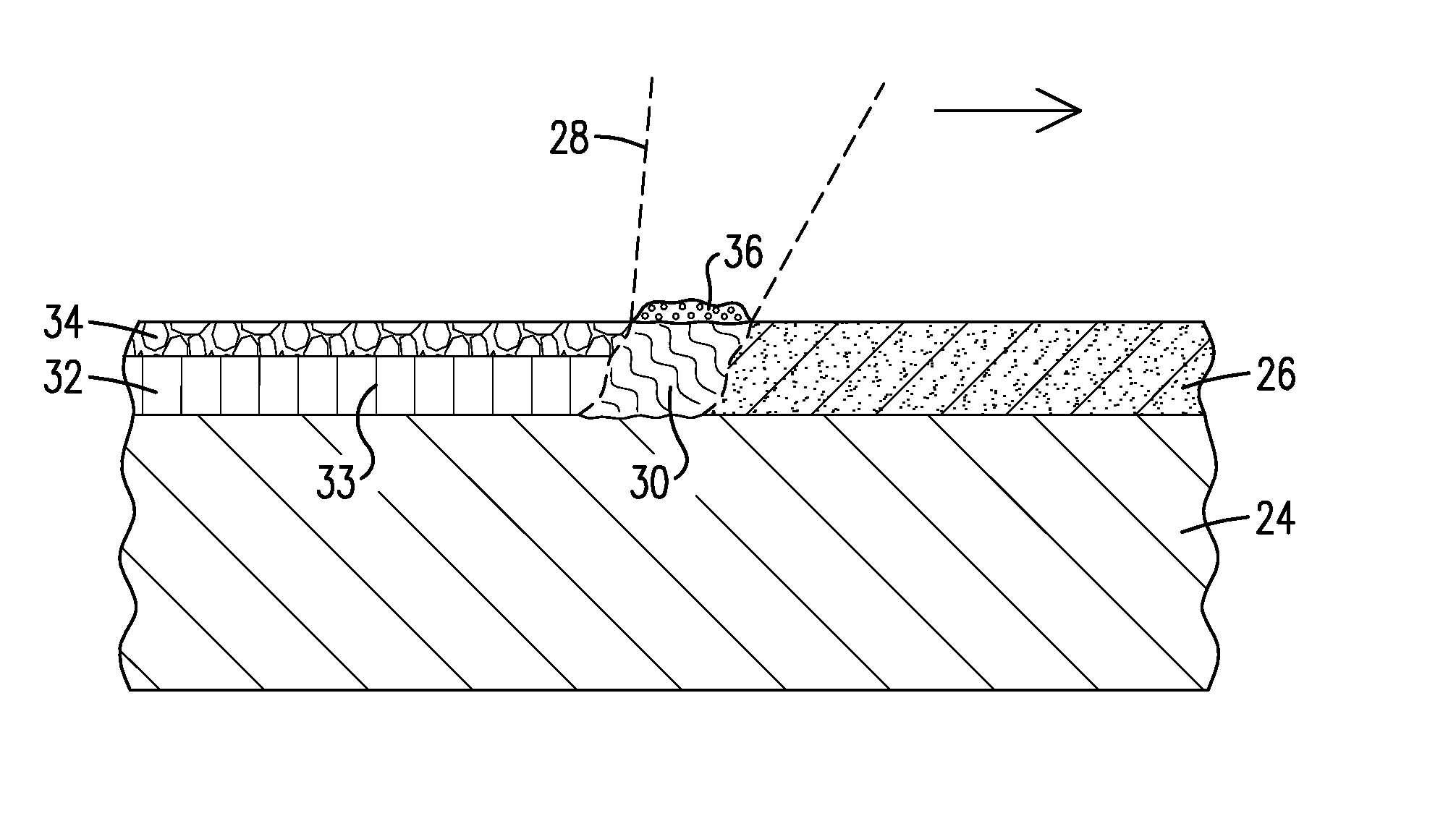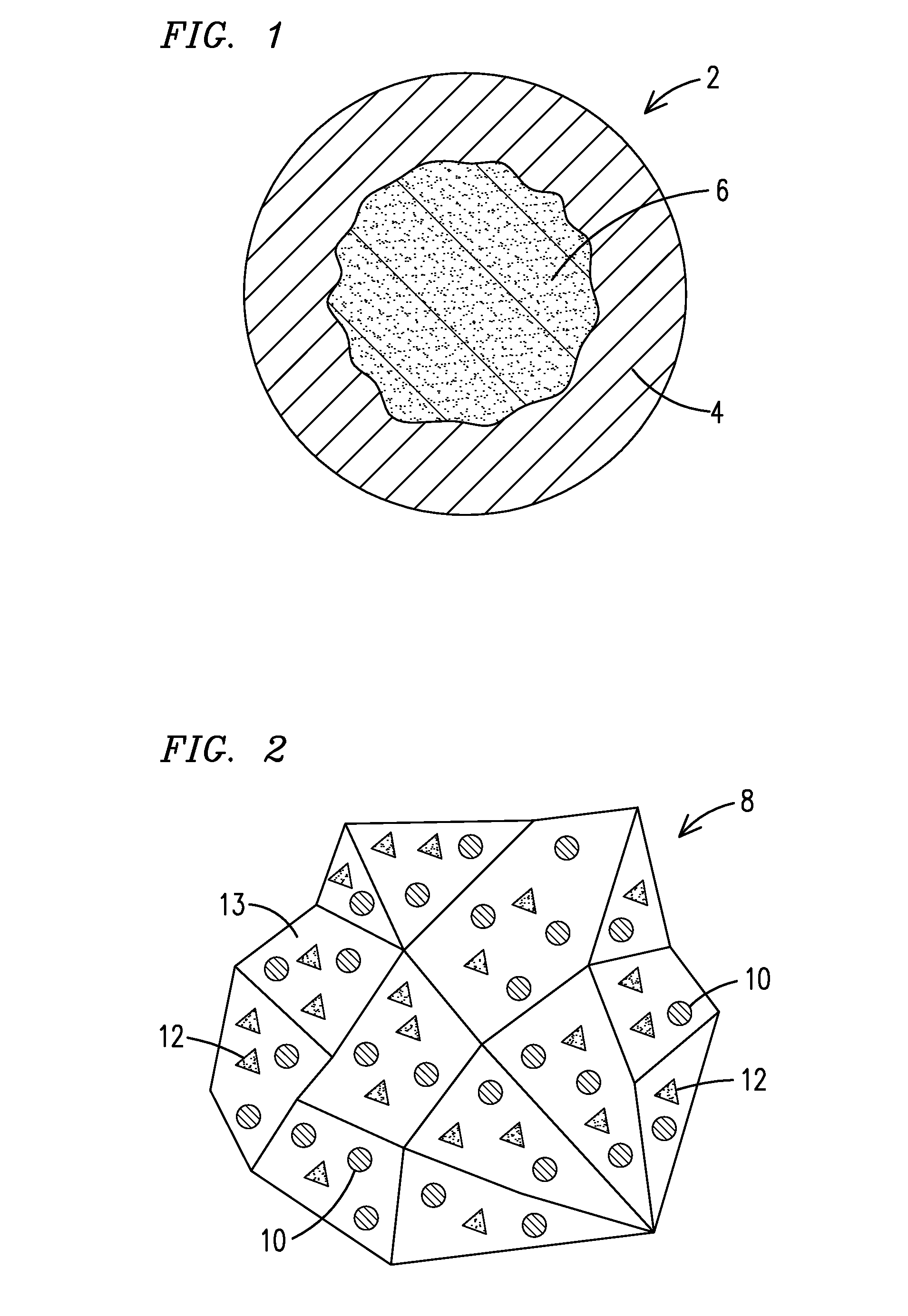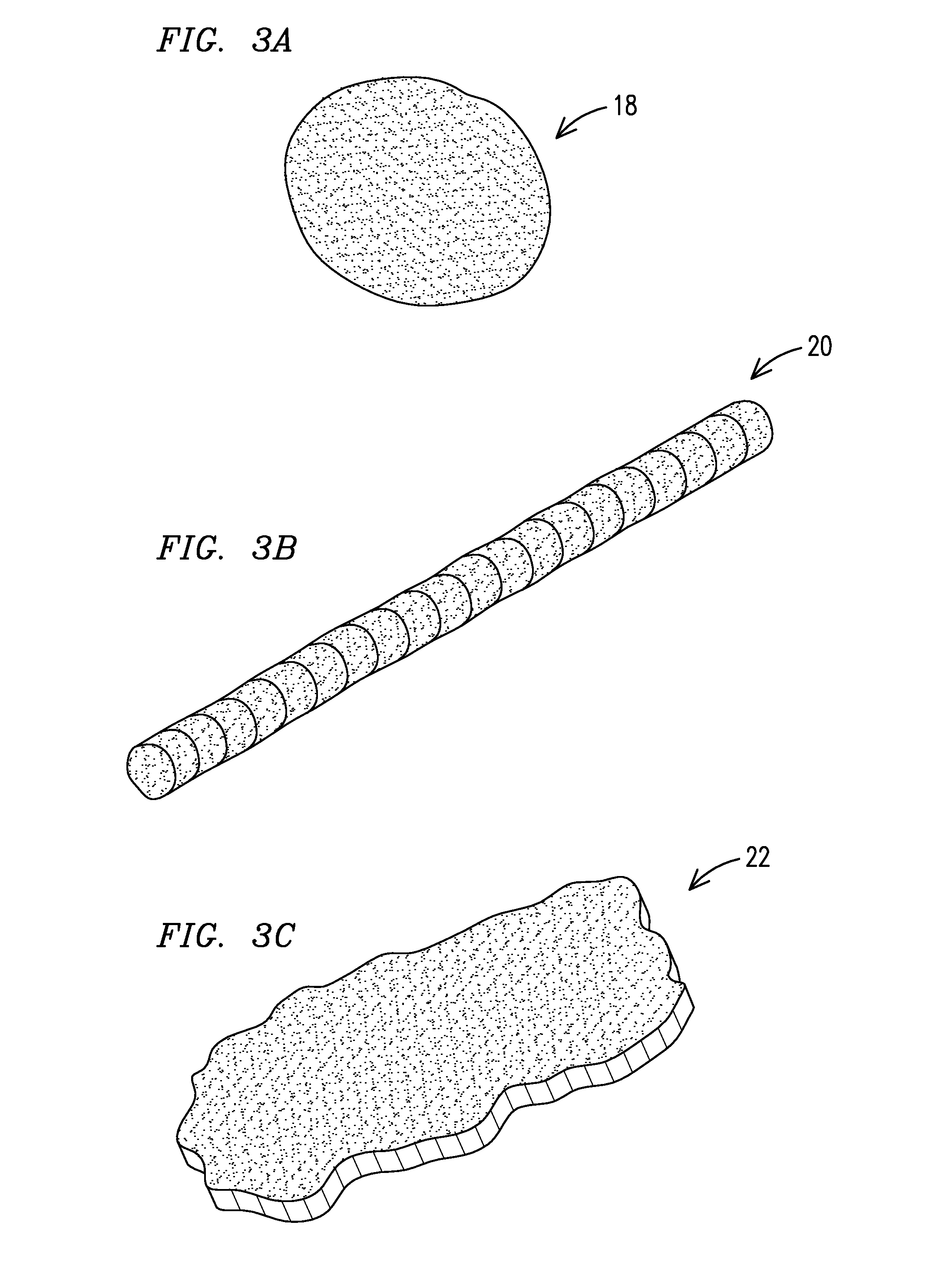Composite materials and methods for laser manufacturing and repair of metals
a technology of composite materials and laser manufacturing, applied in the field of composite materials and methods, can solve the problems of delayed cracking, reactivity of metallic powders with air components such as oxygen and nitrogen, and unwanted porosity of metallic objects
- Summary
- Abstract
- Description
- Claims
- Application Information
AI Technical Summary
Benefits of technology
Problems solved by technology
Method used
Image
Examples
Embodiment Construction
[0014]Applicants have recognized that a need exists to discover alternative materials and methods for addressing the harmful effects that air and moisture can have on laser powder deposition of metals. Ideal materials and methods would enable laser powder deposition of metal in a variety of contexts (e.g., metal component fabrication and repair, bulk metal production) to produce metallic materials containing fewer impurities and defects resulting from exposure to air and moisture—while at the same time avoiding the need to rely upon currently-employed protective techniques such as using pre-heated powder hoppers, inert shielding gases and / or vacuum conditions, reducing agents, and post-process hot isostatic pressing (HIP). Ideal materials and methods would also be compatible with laser processing of superalloys, or superalloy precursors to form superalloys.
[0015]It is proposed that the problems associated with air and moisture can be mitigated by employing novel composite materials ...
PUM
| Property | Measurement | Unit |
|---|---|---|
| Volume ratio | aaaaa | aaaaa |
Abstract
Description
Claims
Application Information
 Login to View More
Login to View More - R&D
- Intellectual Property
- Life Sciences
- Materials
- Tech Scout
- Unparalleled Data Quality
- Higher Quality Content
- 60% Fewer Hallucinations
Browse by: Latest US Patents, China's latest patents, Technical Efficacy Thesaurus, Application Domain, Technology Topic, Popular Technical Reports.
© 2025 PatSnap. All rights reserved.Legal|Privacy policy|Modern Slavery Act Transparency Statement|Sitemap|About US| Contact US: help@patsnap.com



